For many of us, a holiday just isn’t a holiday without a relaxing, sunset-catching soak in a hot tub (possibly equipped with a well-deserved glass of bubbles and some sparkling conversation).
Surrounded by whispering trees and gently emerging stars, what better way to remind yourself that you’re far away from everyday life – assuming that’s not your usual after-work routine, of course!
Main image: Forest bathing at Glen Dye Cabins and Cottages, Aberdeenshire, Scotland
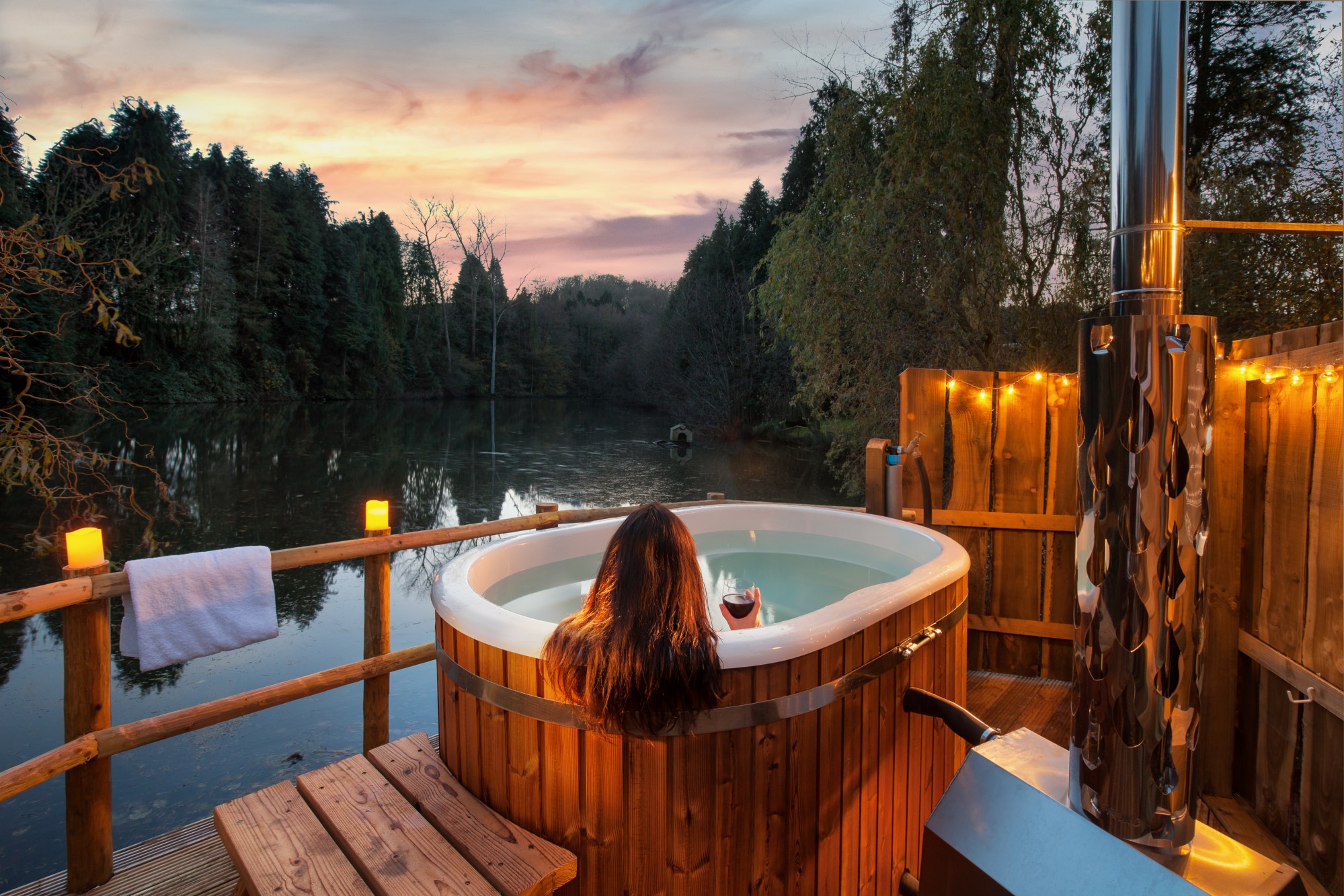
Above: Lakeside views from the hot tub at The Shepherd’s Hut Retreat, Somerset
You might already know that our collective love of an invigorating soak originates from the turbulent hot springs our ancestors immersed themselves in after long days of hunting and foraging.
But the journey that led us from those ancient springs to today’s hot tubs is as fascinating as it is exotic…so if you’re ready, let us begin (and excuse us for throwing in a few tempting images of our favourite Host Unusual hot tubs for good measure)!
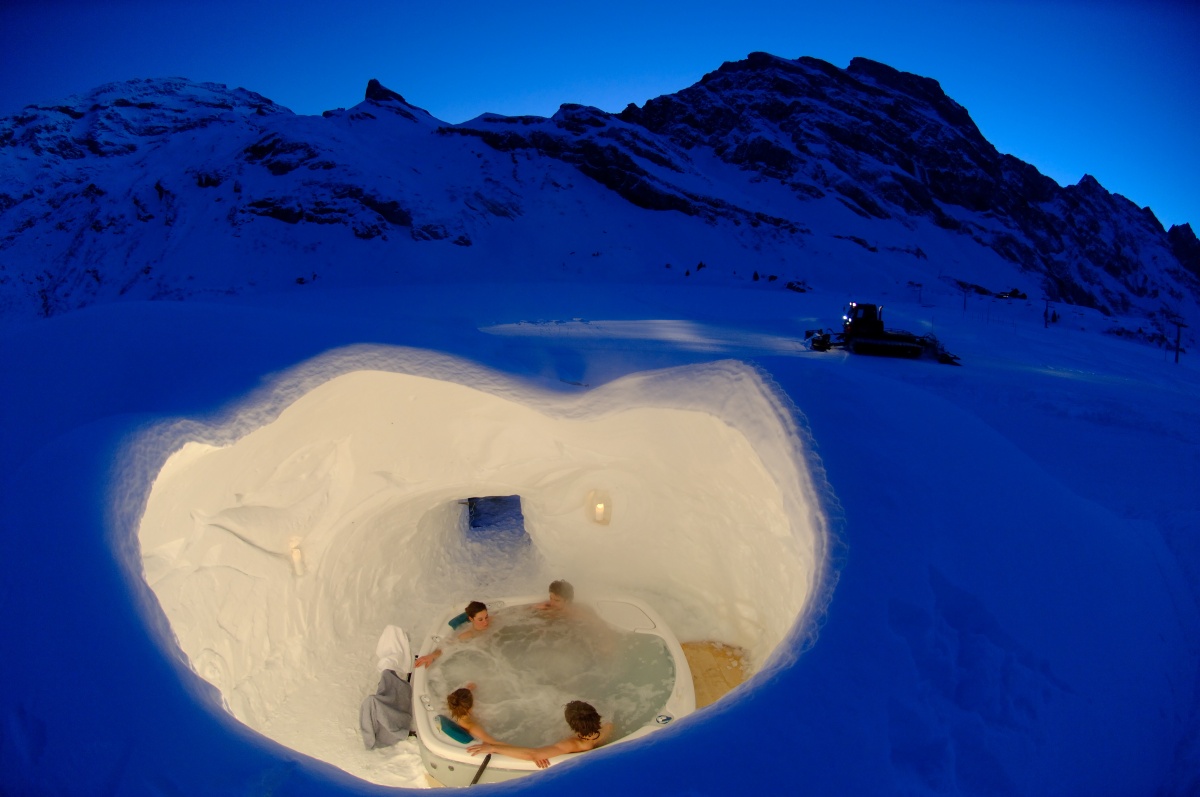
Above: A jacuzzi in the ice at Iglu-Dorf Engelberg in the Swiss Alps
The Early Joys of Hot Water Bathing
We humans have always loved a good bath. So much so that some of the earliest recorded settlings have been based around hot springs, most famously in what’s now Western Australia, and on Central Asia’s Tibetan Plateau.
We’re also nothing if not supreme innovators, and over the years our love of hot water was gradually brought inside our homes. The ancient Egyptians built bathing chambers in theirs, commanding servants to pour water over their heads in an early form of showering.
The Ancient Greeks, meanwhile, believed (correctly, as it turned out!) that hot spring water had the power to heal. To help them relax and enjoy the bathing experience, they set about carving seats from the natural rock – a technique that was later copied and advanced by the Romans.

Above: Soak up the far-reaching views from Il Baciarino’s woodfired hot tub in Tuscany, Italy
A Roman Revolution
By 33 AD, 170 baths had been built in Rome. Cleverly constructed from concrete, aqueducts channelled cold water to these incredibly popular public bathhouses, to then be heated by a system called a hypocaust (which also warmed the floors and walls – bliss!)
However, after the fall of the Roman Empire, the bathhouses began to disappear. Yet the tradition of bathing continued in other parts of the world, including Japan, where it could be said that the modern hot tub was truly born.
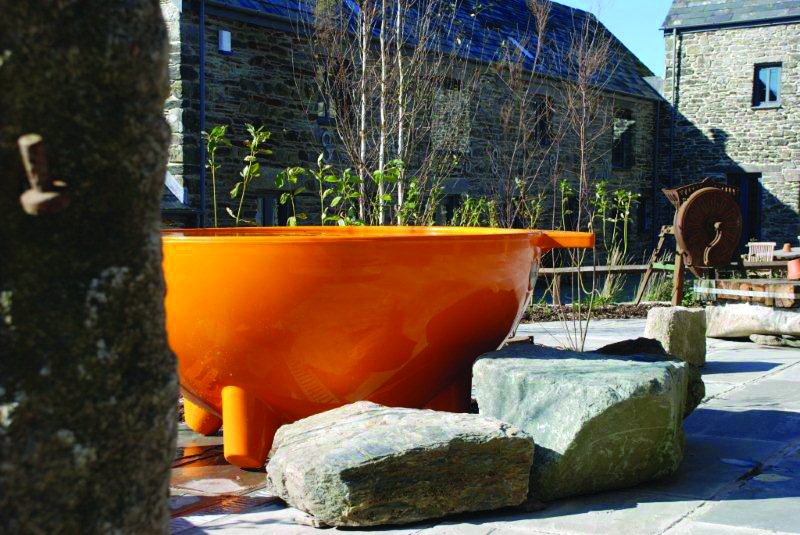
Above: A very modern hot tub at Tregulland, Cornwall
Japanese Bathing – a cultural transformation
It isn’t really surprising that the hot tubs we know and love today were inspired by Japan. It’s a country that consists of volcanic islands…with numerous hot springs that people dipped in for centuries.
And so Japanese bathing took on different forms, from public and private bathing houses located around natural hot springs (onsen), and artificially-constructed bathhouses heated by furnaces (sent?s), to private wooden hot tubs for homes (ofuros).
After the Second World War, returning American soldiers brought Japanese bathing practices home with them…and hey presto, a worldwide hot tub obsession was born!
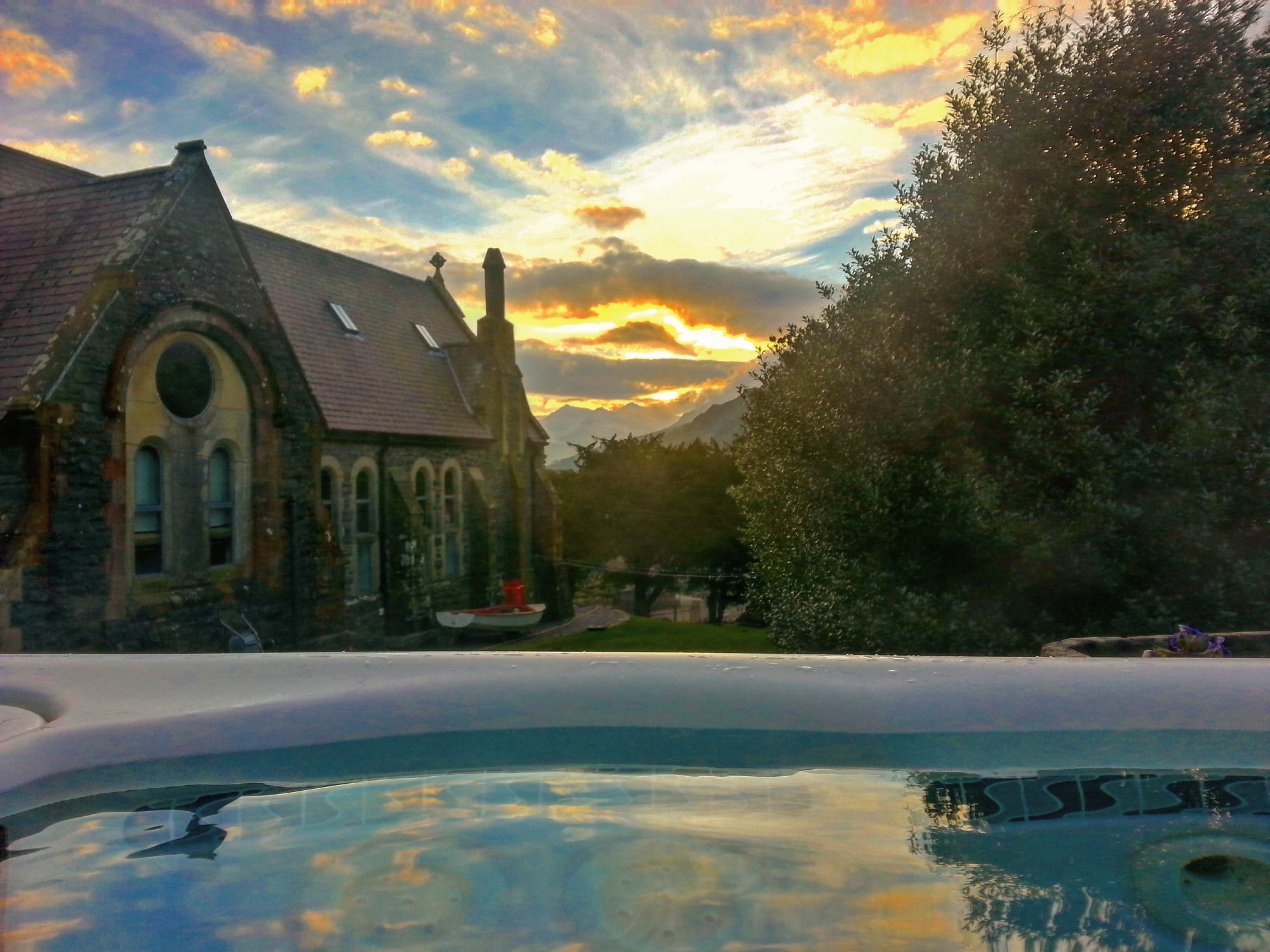
Above: A celestial hot tub at St Curig’s Church in Snowdonia, Wales
The Jacuzzi intervention
If you ever wondered where the word ‘Jacuzzi’ came from, it’s the family name of two Italian brothers who invented the very first portable hydrotherapy pump, in a humble attempt to relieve a family member from rheumatoid arthritis.
A few years later, the brothers built jets directly into the walls of hot tubs…sparking a brand-new industry in the process. Though wooden tubs were still popular, now they could be created from extra-durable fibreglass and acrylic.
(We’re not sure who decided to add extra bells and whistles like disco-lighting, speakers, and drinks trays…but we like their style!)

Above: Romantic treetop bathing at Pella Roca Spa Cabins, Midi-Pyrenees, France
The Enduring Benefits of a Hot Soak
Our ancestors’ instincts were right: there are a great deal of benefits to a relaxing dip in a hot tub. So if you were feeling guilty about taking some time out to indulge, maybe you can comfort yourself with the fact that it’s actually good for you!
For starters, hot tubs can help ease aches and pains, as heat is carried deep into your muscles. Stress starts to disappear, and blood pressure can be reduced in as little as 20 minutes, while if you choose a Jacuzzi, you can benefit from some therapeutic massage too.
So if we’ve whetted your appetite for a hot tub stay this year, why not browse our dedicated hot tub breaks category where you’re sure to find a range of tubs in every shape and style?
Happy soaking!
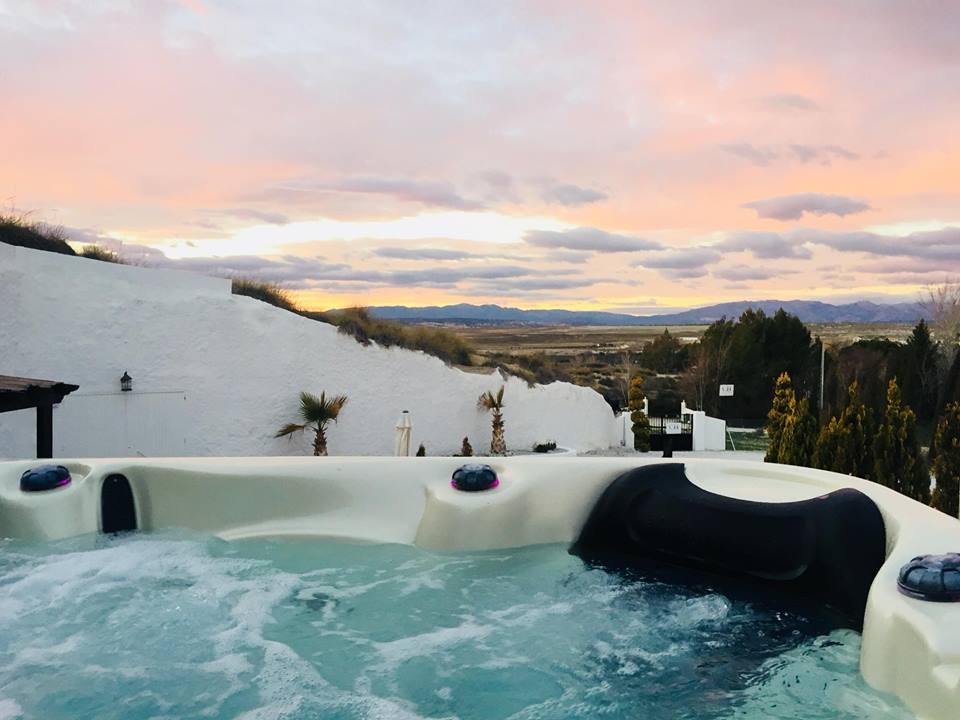
Above: A sunset hot tub with a view at Cuevas Helena, an Andalucian cave house in Granada




















